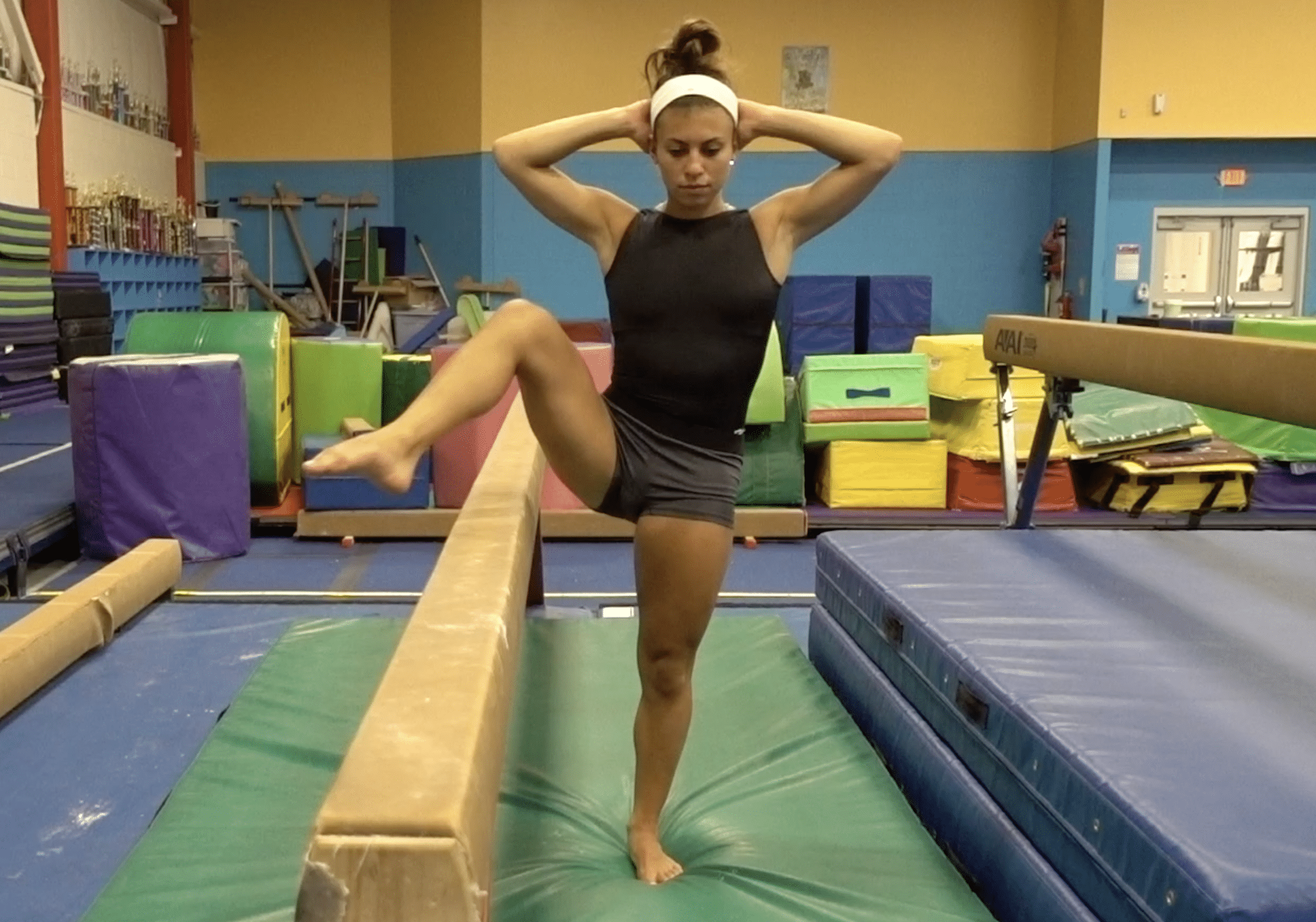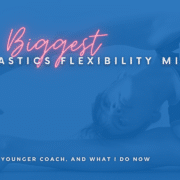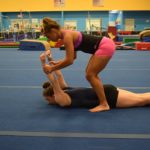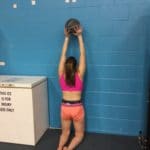Gymnastics, Please Stop These Stretches (Part 3)
In the first part of this article series I covered pushing passive hyper extension for the back hip of splits, then in the second part I covered skin the cats / hyper flexion stretches.
Also, before you dig in more, remember you can download literally all my thoughts on gymnastics flexibility, as well as the exercises and drills I use with gymnasts, for free here.
Download My New Free
10 Minute Gymnastics Flexibility Circuits
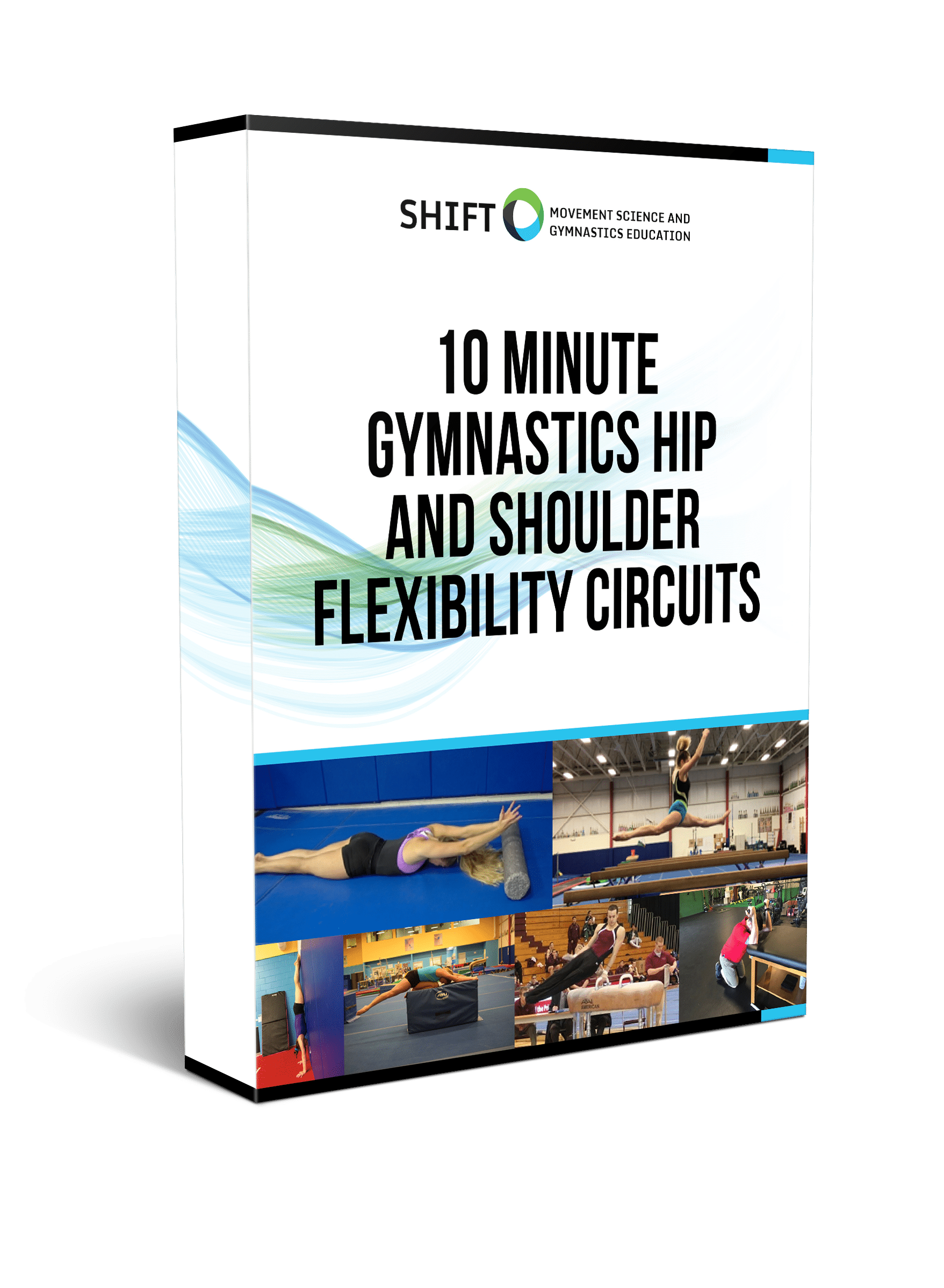
- 4 full hip and shoulder circuits in PDF
- Front splits, straddle splits, handstands and pommel horse/parallel bar flexibility
- Downloadable checklists to use at practice
- Exercise videos for every drill included
Out of all the things I have seen in flexibility methods for gymnastics, the one that drives me the most insane is pushing knees into extension during splits or pikes. Although it’s not as common as the hip and shoulder post, I still have seen it quite a few times when in gyms. It blows my mind that people actually would push on knees for “better lines” at the cost of potentially increasing laxity in their knee and increasing the chance of a gymnast blowing ACL out during landings.

Why The Concern?
Jumping and landing athletes are already at a huge risk for ACL tears, not to mention the even higher risk for young developing female athletes. When someone pushes a knee into extension, we strain the posterior knee joint, other passive stabilizers of the knee, and tension the ACL. Given that gymnasts already straighten their knees and tend to show very knee dominant landings (versus proper hip dominant squat deceleration landings), we really don’t want to putting them more at risk for landing lock legged and having something going seriously wrong.

The ACL tear and knee injury rates in gymnastics are already high enough. It only takes one bad landing for the gymnast to suffer a major and possibly career ending injury. I strongly suggest people who may be unknowingly pushing knees down more in oversplits, or feet elevated pike stretches stop and think about why they chose to certain stretching interventions. Similar to that point, I would also be very careful about how much pressure the front knee of oversplits is taking, and if you use them try to have the gymnast move their front leg up on the mat more. We don’t want just the heel elevated with a long lever arm creating lots of posterior knee joint and ligamentous strain.
Keep these points in mind, and as Dr. Josh Eldridge and I have said before it’s crucial that we make sure gymnasts are landing correctly. This goes for double leg and single leg. Here is a video of some single leg landings on beam we need to be looking out for and correcting. The second video shows better control with the same type of single leg landing.
Those looking for more research related to ACL tear mechanisms can start by following this link here
-
Smith et al. Risk Factors for Anterior Cruciate Ligament Injury. A Review of the Literature — Part 1: Neuromuscular and Anatomic Risk. Sports Health. 2012 Jan; 4(1): 69–78
- Smith et al. Risk Factors for Anterior Cruciate Ligament Injury A Review of the Literature—Part 2: Hormonal, Genetic, Cognitive Function, Previous Injury, and Extrinsic Risk Factors. Sports Health. 2012 Mar; 4(2): 155–161.
-
Noyes FR1, Barber Westin SD. Anterior cruciate ligament injury prevention training in female athletes: a systematic review of injury reduction and results of athletic performance tests. Sports Health. 2012 Jan;4(1):36-46.
What To Do Instead?
The main reason coaches and gymnasts use knee stretching is due to a gymnast being unable to achieve straight knee lines and better form during leaps, jumps, and tumbling. Likely, the most common scenario here is that the gymnast has increased hamstring tone. The majority of gymnasts with increased hamstring tone I would say is due to protective guarding of an overly extended lumbar spine. If they live in this over extended, anteriorly tilted spine it is very easy for their hamstrings to always be “pre-loaded” with basic movements and especially during running/leaping drills. The hamstrings may just be turned on excessively to pull the gymnast out of a poor lumbar position.
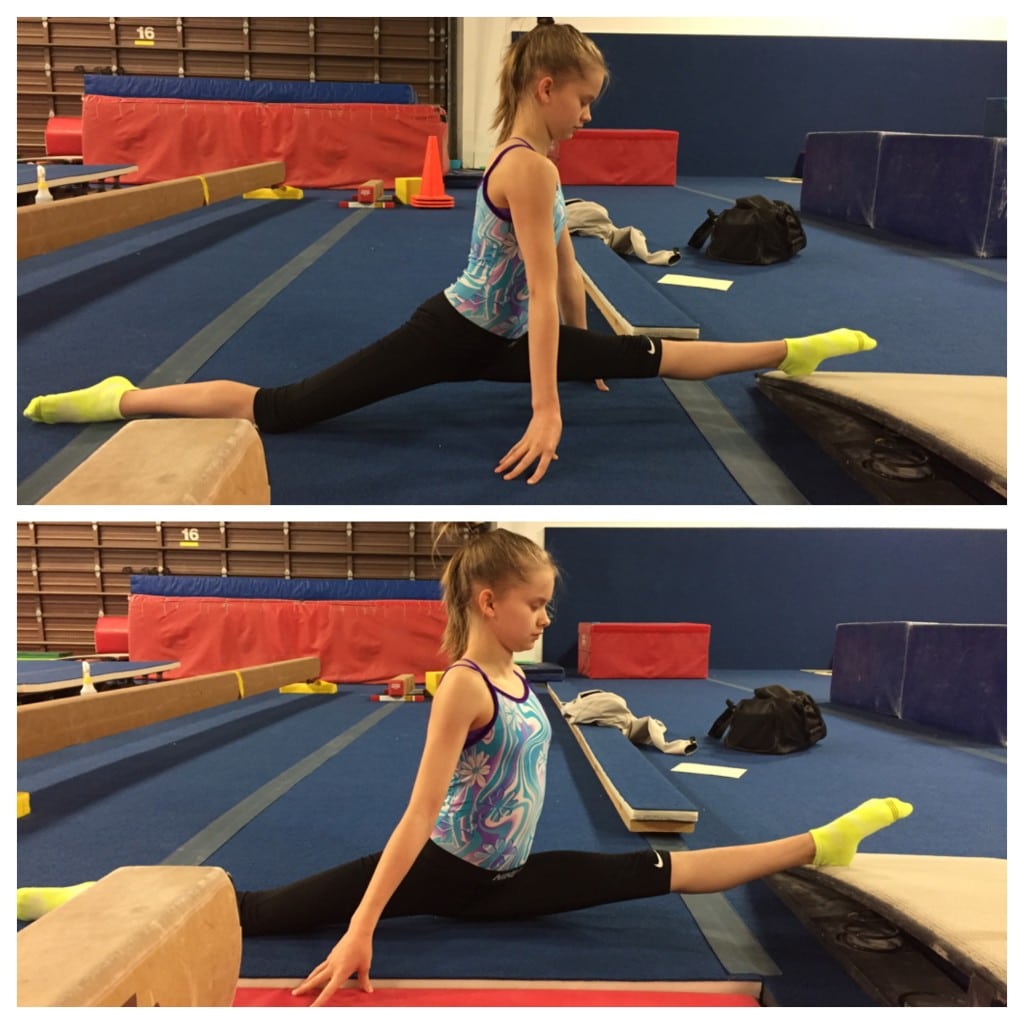
In this case however, the real issue is the lack of core control and not a hamstring tissue problem. As I wrote about in this post, we need to go up the road and correct the underlying issue related to core/spinal positioning during skills rather than keep chasing more splits and flexibility work for the hamstring.
Some gymnasts may actually have true hamstring stiffness problems, and in this case I still never would go to pushing on a knee joint. Try some self-soft tissue work or light manual therapy, some leg lowering drills, dynamic warm up drills, and if needed some eccentric training as that has some theoretical support for truly adding sarcomeres in series (research can be found within article here).
You can also put these drills into complexes to help improve overall split mobility, hamstring lengthening patterns, and gymnastics skills.
If calf tissue is the goal for mobilization to increase pike stretch or in-bars, try soft tissue work daily before practice followed by more unloaded stretching and then strengthening of the anterior lower leg muscles.

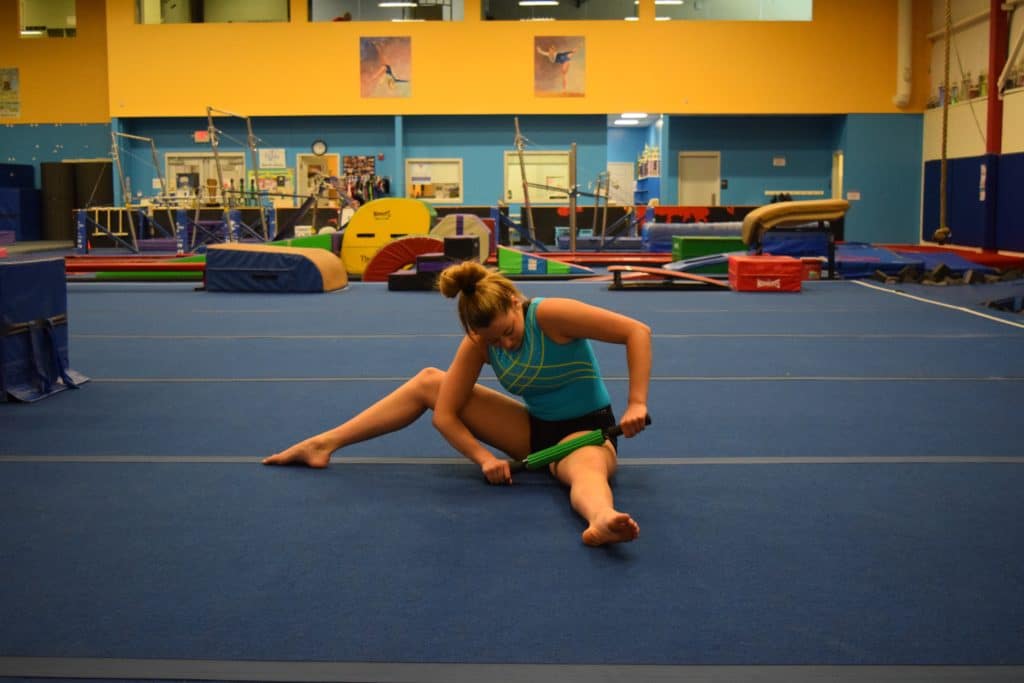
I have also seen hundreds of great “active flex” drills that work on leg tightening for better control of form during skills. They would go great following the above mobility/control drills to help the new motion transfer to gymnastics skill patterns. Here’s one example,
Concluding Thoughts
Remember we are obviously we are talking about a healthy, functioning gymnast. Gaining back knee extension with rehabilitative methods following surgery or injury is a completely different story. Even with that, I still support the notion that aggressive cranking on someone’s knee isn’t the best first option to use, and consistency more than intensity may be a better route.
So that sums things up for this article series. The response has been overwhelmingly positive and I’m really happy to hear people have found it helpful. I’ll be back at it after the new year with some more new content, and the conclusion of my extension based low back pain rehab article series. Take care,
Dave Tilley DPT, SCS





